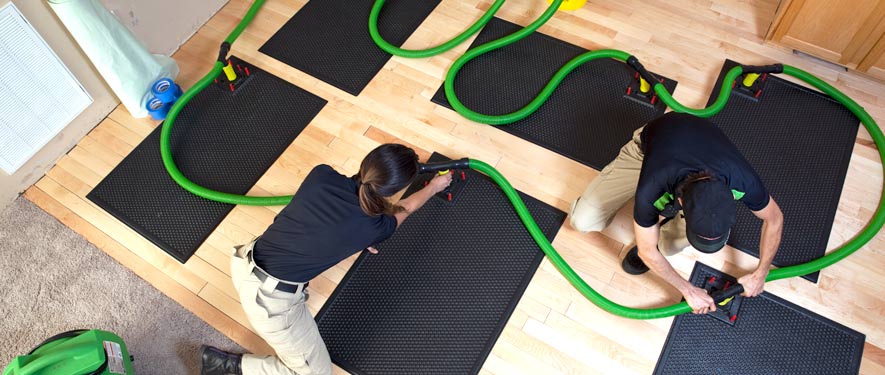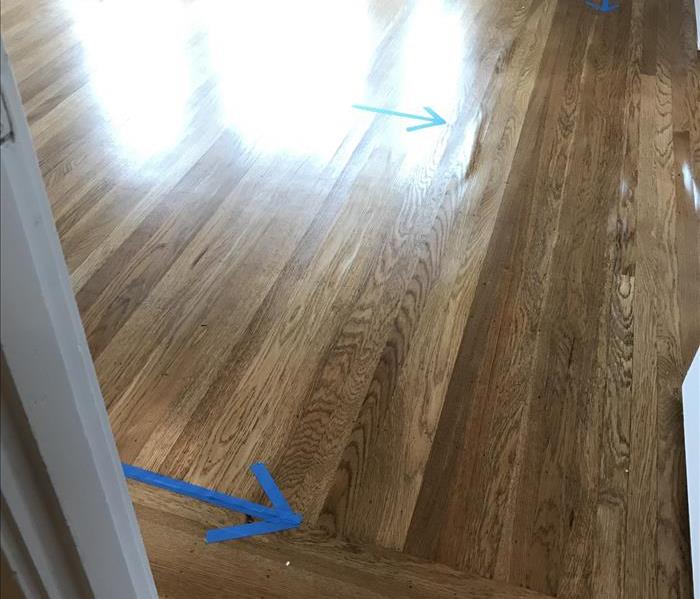
Step 4: Drying and Dehumidification
Our Water Damage Restoration Process
After extraction and the removal of all wet materials, the drying process begins. This step is important to clear up any remaining moisture after water removal. The floors and walls may appear dry, but a quick inspection using moisture meters and infrared cameras will reveal they are still wet to the touch. Nearly all building materials, like wood, drywall, and flooring materials, are porous and therefore retain water. This retained water can cause the materials to break down, warp, or cause mold damage. Advanced technology and techniques are used in this process which can include air movers, dehumidifiers, wood floor drying systems, and heaters to generate dry air and increase air circulation and evaporation. During the drying, the environment is carefully monitored each day and the progress results are documented. Moisture control is absolutely crucial in preventing mold growth. Normal drying time is usually 2 to 4 days depending on the scenario and materials impacted. This way it is extremely important to treat any water damage as an emergency. When it comes to drying after water damage SERVPRO of San Mateo makes sure to carefully restore your home "Like it never even happened."
The intrusion of water into your home or place of business can result in mold growth. When water damages are not addressed right away, the resulting damage can present an increased risk of harmful mold growth. If the humidity and moisture levels in the environment are not promptly returned to normal, mold spores may grow and multiply.
Drying / Dehumidification
Our Professionals will use room measurements, temperature, and relative humidity to determine the optimal number of air movers and dehumidifiers to dry your home or business. We’ll carefully monitor the progress using moisture meters until the materials return to acceptable drying goals.
- Use Dehumidification Equipment
- Use Monitoring Equipment to Track Progress
Monitor Floor and Walls
We check the moisture levels to monitor the drying process.
- Monitor Floors
- Monitor Walls
Drying Equipment
- Industrial-grade dehumidifiers help prevent secondary water damage like swelling and warping of floors, walls, and furniture.
- High-speed air movers create airflow across walls, carpets, pads, and furniture, which accelerates the evaporation of moisture.

 24/7 Emergency Service
24/7 Emergency Service




